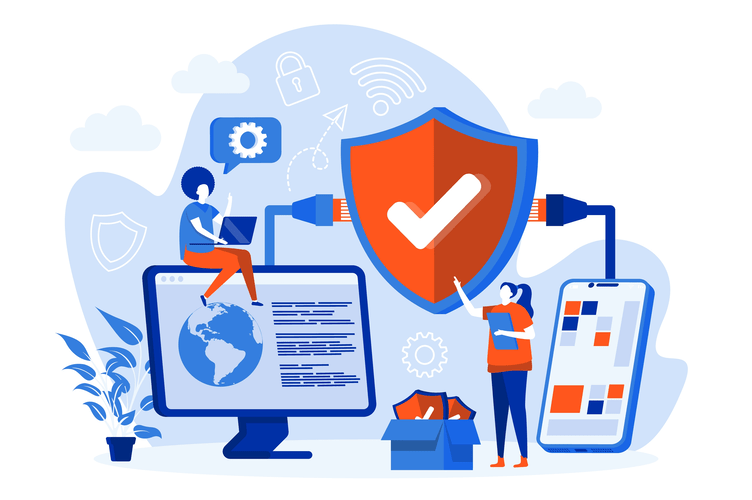Content
The build process draws source code from a repository, establishes links to relevant libraries, modules and dependencies, and compiles all these components into an executable (.exe) file. Tools used in this stage also generate logs of the process, denote errors to investigate and correct, and notify developers that the build is completed. While each technique offers slight differences, the common emphasis on continuous iteration has changed the nature and power of software development.

It’s built on Argo for declarative continuous delivery, making modern software delivery possible at enterprise scale. Delivering new software is the single most important function of businesses trying to compete today. Many companies get stuck with flaky scripting, manual interventions, complex processes, and large unreliable tool stacks across diverse infrastructure. Software teams are left scrambling to understand their software supply chain and discover the root cause of failures.
Differentiating features
Moreover, choosing Azure DevOps as your preferred CI/CD tool, you can build, test, and deploy applications you create on GitHub. Additionally, you get reliable, fast builds on all platforms via a deep integration with GitHub checks, pull requests, and statuses. BambooBamboo perfectly fits into cloud-based software development stacks such as AWS and has many automated tasks for build, test, and deployment use cases. Octopus Deploy applies automated workflows to streamline even the most complex software deployments. It uses automated deployment tools for developers and releases managers and automated runbooks to reduce efforts for operations teams.
- Build configurations are stored in your application repo as YAML, making it easier to track changes and contribute to your testing process.
- The build process draws source code from a repository, establishes links to relevant libraries, modules and dependencies, and compiles all these components into an executable (.exe) file.
- Essentially, DevOps focuses on integrating operations with development teams, CI/CD , as well as automation processes and tasks.
- You probably noticed the first and last steps have the keyword uses.
- Build environments include Docker, Linux , macOS, Windows, GPUs, and Arm.
Travis eliminates the need for a dedicated server, as it is hosted in the cloud. However, it also has an on-premises version for enterprise customers. Although TeamCity is well-known for its visual-aesthetic UI, it still can be complex and overwhelming for newcomers. It may take developers some serious study before they are ready to use the tool in production. TeamCity integrates with .NET technologies better than any other CI tool out there.
Gitlab CI:
Some of the aforementioned CI Tools like Jenkins can be installed on-premises. This means your team is responsible for configuring and managing the CI system on your own infrastructure. For example, if https://globalcloudteam.com/ you have customer data privacy concerns to meet compliance standards, on-premises may be a requirement. Additionally, on-premises instances may offer deeper customization and configuration options.
Also, when developers have shorter commit cycles, they probably won’t edit the same code and need merges. It’s a good idea to ask developers to run regression tests in all environments, so that developers only send tests to version control when all their tests pass. With automated testing, which identifies when builds pass or fail, engineers can also move code through regression tests. Regression tests help ensure that code doesn’t break a software build when it’s merged with other trunks and confirm that code is working as expected. With people and locations established, the next step is to decide on timing and how development teams will work with the business.
TeamCity
Developers share each new piece of code in a merge request, which triggers the pipeline that performs all the validation tasks prior to merging the changes within the source code repository. GitLab provides continuous integration as part of its version control offering. Its CI tool is included as a web app with an open API that manages projects through a friendly user interface, integrating with all GitLab features. Through this API, developers can create even deeper integrations with the product. Jenkins is a popular, open-source automation server for continuous integration, with hundreds of plugins and a friendly user interface.

CodeShip has a special Parallel CI feature for running tests in parallel. Travis CI lags behind Jenkins and other tools in the number of plugins and third-party integrations. In contrast to Jenkins and TeamCity, Bamboo doesn’t support that many plugins. continuous integration solution There are only 185 apps currently listed on the Atlassian repository. Moving from one major version to another is a long process that has to be done manually on your server. TeamCity is easy to set up and ready to work right after installation.
Salient Features of Terraform
How continuous integration and continuous delivery fit together. CI employs a variety of tools and automation techniques to create builds and shepherd them through initial testing, such as sniff or unit testing, along with more comprehensive integration testing. The limited nature of each iteration means that bugs are identified, located, reported and corrected with relative ease.

Ultimately, CI ends when a build successfully completes initial testing and is ready to move to more comprehensive testing. Preparation might include packaging the build into a deployable image, such as a container or virtual machine image, before making it available to dedicated testers. Often for audit and quality assurance, you need to be able to look back at test results and the like many months later.
Browse by team type
A Professional plan will get you 100 build configurations and is free forever, while an Enterprise plan gives you unlimited build configurations from $1,999 per year, with a 50% renewal discount. The latter also offers priority support from the JetBrains team. Building and deploying for mobile is typically an involved, time-consuming process. One of the most compelling advantages of CI/CD, then, is its ability to reduce development and deployment time and effort. Some estimate that teams can save up to 20% of their app development time by implementing CI/CD. Continuous delivery picks up where continuous integration ends, automatically generating and distributing builds either for internal testing, or for external distribution.
